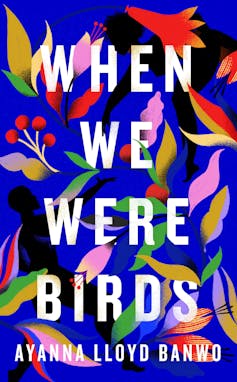Ayanna Lloyd Banwo’s debut novel When We Were Birds is a spellbinding, beautifully told blend of love story and magical realism ghost story.

The novel opens with protagonist Yejide sitting on her grandmother’s lap as she tells her a story that opens “there was a time before time”. Because of the text’s strong narrative voice, it feels like the reader stays on that lap throughout the novel. Lloyd Banwo’s prose, written in Trinidadian English, is incredibly poetic, lyrical and ripe with lore and proverb that firmly roots the narrative in a tradition of anglophone Caribbean women’s writing.
Yejide’s grandmother tells her a story about the time before time, when animals reigned on a utopian Earth. After an encounter with human warriors, war breaks out and wreaks havoc on the animals, leaving many dead.
The narrative describes parrots transforming into the “corbeaux” bird, “devouring the dead” and bringing balance to the forest in doing so. The corbeaux is known across the Caribbean as a bird of prey associated with death, and it is the fictional corbeaux’s work with the dead that connects the novel’s two protagonists and acts as a catalyst for the romantic storyline.
Yejide, who inherits the gift of talking to the dead from her maternal line, finds herself drawn to Darwin, a grave digger whose strict Rastafarian upbringing results in a conflict between his faith and work with the dead.
His mother Janaya tells her son: “Not in no dead yard and not in that dead city … you can’t go in that place and mix up in them people,” before Darwin makes the decision to cut his dreadlocks (which marks the changed relationship with his mother as well as symbolising shedding old skin and old life).
He takes up employment in Port Angelis, a fictional Trinidadian city brought to life beautifully through descriptions of both its landscape and its people. It is in Fidelis, the largest cemetery in Port Angeles, surrounded by the dead and by all the history buried with them, that Darwin and Yejide meet and fall in love.
Between the realms of the dead and the living
Beyond being a love story, When We Were Birds is an exquisite exploration of trauma, legacy, lineage, familial relationships and ancestral reverence.
One of the novel’s most intriguing relationships is that between Yejide and her mother, Petronella. Theirs is a relationship characterised by coldness and silence.
Yejide’s gift is passed down to her from her mother, who inherited the gift from her mother. As I read this mother-daughter relationship (a relationship that has so often been explored in Caribbean women’s writing), I consider how it might be symbolic of the colonial history of the Caribbean, and the inherited traumas associated with it. Talking to the dead is a gift because it means a lasting connection with one’s ancestors, but it also means existing between the realms of the dead and the living and being reminded of difficult pasts.
Read more: Why we need to stop thinking of the Caribbean as a tourist 'paradise'
Trinidad’s literary legacy is undeniable. The southern Caribbean island has given the world some of its best literature, with writers such as Samuel Selvon, M. NourbeSe Philip, V.S. Naipaul and Shani Mootoo gracing many a university reading list.
Monique Roffey noted in an article in The Guardian earlier this year, “these days Trinidad is producing world-class female writers hand over fist”. Roffey’s article highlights the recent literary achievements of a number of female Trinidadian writers and mentions Ayanna Lloyd Banwo as an emerging star and a Caribbean writer to continue to watch.
When We Were Birds is an engaging, magical and confident debut that bears all the markings of a Caribbean classic, and is yet another example of 21st-century Caribbean literary excellence.

